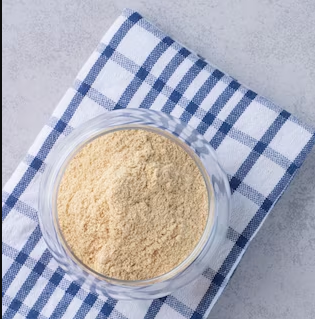1
/
of
1
Spice Hub of India
Dry Yeast
Dry Yeast
Regular price
$2.29 CAD
Regular price
Sale price
$2.29 CAD
Unit price
/
per
Couldn't load pickup availability
Dry yeast is a form of yeast that has been dehydrated to remove its moisture content, allowing for longer shelf life and easier storage. This type of yeast is commonly used in baking, particularly for leavening bread and other baked goods. Here are some key points about dry yeast:
Types of Dry Yeast:
Active Dry Yeast: This type of dry yeast needs to be activated by dissolving it in warm water before adding it to the dough. The water activates the yeast, allowing it to ferment and produce carbon dioxide gas, which causes the dough to rise.Instant Yeast (Rapid-Rise or Quick-Rise): Instant yeast can be directly added to the dry ingredients in a recipe without prior activation. It activates quickly when mixed with the dough ingredients and often results in a faster rise.
Shelf Life: Dry yeast has a longer shelf life compared to fresh or cake yeast. Proper storage is essential to maintain its effectiveness. It should be stored in a cool, dry place and preferably refrigerated or frozen for extended storage.
Usage in Baking:
Bread: Dry yeast is a key ingredient in bread making. It ferments sugars in the dough, producing carbon dioxide, which causes the dough to rise and gives bread its light and airy texture.Other Baked Goods: Dry yeast can also be used in various other baked goods, including pizza dough, rolls, and pastries.
Activation for Active Dry Yeast:
Instant Yeast Usage:
Yeast Substitution: Dry yeast and fresh yeast are not always interchangeable at a one-to-one ratio. Adjustments may be needed based on the type of yeast and the recipe.
Health Benefits: Yeast is a source of various B vitamins, including B1 (thiamine), B2 (riboflavin), B3 (niacin), and B9 (folate). It also provides small amounts of minerals such as selenium and zinc.
Gluten-Free Baking: Dry yeast is commonly used in gluten-free baking to help leaven gluten-free bread and other baked goods.
Commercial and Home Use: Dry yeast is widely used in commercial baking as well as in home kitchens. Its convenience and long shelf life make it a popular choice for many bakers.
When using dry yeast in recipes, it's important to follow the specific instructions provided in the recipe, as different types of yeast may require different handling and activation procedures.
Share


